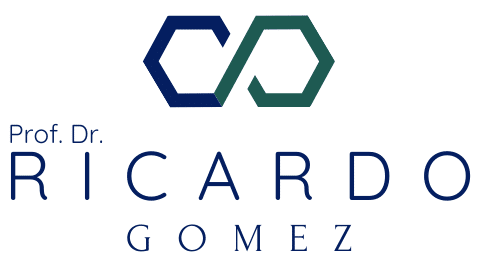Apresentamos abaixo um painel molecular que poderá auxiliar no diagnóstico dos tumores de glândula salivar. Importante dizer que no quadro abaixo listamos apenas os eventos genéticos mais recorrentes e com implicações no diagnóstico ou prognóstico de tumores. Alterações genéticas secundárias detectadas em casos isolados ou que ainda precisam de validação não foram incluídas.
Caro leitor, sinta-se à vontade para nos enviar sugestões de alterações.
Prof. Ricardo Santiago Gomez
E-mail: contato@patologiabucal.com.br
Neoplasia de Glândula Salivar |
Evento genético principal |
Adenoma pleomófico |
|
Adenoma de células basais |
|
Adenoma policístico esclerosante |
|
Sialadenoma papilífero |
|
Adenocarcinoma de células basais |
|
Adenocarcinoma mucinoso |
|
Adenocarcinoma polimorfo |
|
Adenocarcinoma microsecretor |
|
Carcinoma hialinizante de cels claras |
|
Carcinoma adenoide cístico |
|
Carcinoma de células acinares |
|
Carcinoma do ducto salivar |
|
Carcinoma epitelial-mioepitelial |
|
Carcinoma ex-adenoma pleomórfico |
|
Carcinoma intraductal |
|
Carcinoma mucoepidermoide |
|
Carcinoma secretor |
|
Carcinoma mioepitelial |
|
Leitura Complementar:
Aström AK, Voz ML, Kas K, Röijer E, Wedell B, Mandahal N, et al. Conserved mechanism of PLAG1 activation in salivary gland tumors with and without chromosome 8q12 abnormalities: identification of SII as a new fusion partner gene. Cancer Res 1999;59:918-923.
Bishop JA, Weinreb I, Swanson D, Westra WH, Qureshi HS, Sciuba J,et al. Microsecretory Adenocarcinoma: A Novel Salivary Gland Tumor Characterized by a Recurrent MEF2C-SS18 Fusion. Am J Surg Pathol 2019 Aug;43:1023-1032.
Black M, Liu CZ, Onozato M, Iafrate AJ, Darvishian F, Jour G, et al. Concurrent identification of Novel EGFR-SEPT14 Fusion and ETV6-RET Fusion in Secretory Carcinoma of the Salivary Gland. Head Neck Pathol 2020;14:817-821.
Brill LB, Kanner WA, Fehr A, Andrén Y, Moskaluk CA, et al. Analysis of MYB expression and MYB-NFIB gene fusions in adenoid cystic carcinoma and other salivary neoplasms. Mod Pathol 2011;24:1169-1176.
Chapman E, Skalova A, Ptakova N, Martinek P, Goytain A, Xiong W, et al. Molecular Profiling of Hyalinizing Clear Cell Carcinomas Revealed a Subset of Tumors Harboring a Novel EWSR1-CREM Fusion: Report of 3 Cases. Am J Surg Pathol 2018;42:1182-1189.
Chen S, Peng J, Yuan C, Sun L, Zhang R, Sun Y. Sialadenoma papilliferum: clinicopathologic, Immunohistochemical, molecular analyses of new five cases and review of the literature. Diagn Pathol 2021;16:22.
Chiosea SI, Miller M, Seethala RR. HRAS mutations in epithelial-myoepithelial carcinoma. Head Neck Pathol 2014;8:146-150.
Chiosea SI, Thompson LD, Weinreb I, Bauman JE, Mahaffey AM, Miller C, et al. Subsets of salivary duct carcinoma defined by morphologic evidence of pleomorphic adenoma, PLAG1 or HMGA2 rearrangements, and common genetic alterations. Cancer 2016;122:3136-3144.
Cipriani NA, Lusardi JJ, McElherne J, Pearson AT, Olivas AD, Fitzpatrick C,et al. Mucoepidermoid Carcinoma: A Comparison of Histologic Grading Systems and Relationship to MAML2 Rearrangement and Prognosis. Am J Surg Pathol 2019;43:885-897.
Fehr A, Werenicz S, Trocchi P, Falk M, Friedrich RE, Stammler A, et al. Mucoepidermoid carcinoma of the salivary glands revisited with special reference to histologic grading and CRTC1/3-MAML2 genotyping. Virchows Arch 2021;479:975-985.
Fonseca PF, Filho MS, Altemani A, Speight PM, Vargas PA. Molecular signature of salivar gland tumours: potential use as diagnostic and prognostic marker. J Oral Pathol Med 2016;45:101-110.
Fujii K, Murase T, Beppu S, et al. MYB, MYBL1, MYBL2 and NFIB gene alterations and MYC overexpression in salivary gland adenoid cystic carcinoma. Histopathology 2017;71:823-834.
Grünewald I, Vollbrecht C, Meinrath J, Meyer MF, Heukamp LC, Drebber U, et al. Targeted next generation sequencing of parotid gland cancer uncovers genetic heterogeneity. Oncotarget 2015;6:18224-18237.
Haller F, Bieg M, Will R, Körner C, Weichenhan D, Bott A, et al. Enhancer hijacking activates oncogenic transcription factor NR4A3 in acinic cell carcinomas of the salivary glands. Nat Commun 2019;10:368.
Ide F, Ito Y, Kikuchi K, Satomura K, Ogawa I, Yamamoto H. Activating HRAS mutation in a case of inverted ductal papilloma of the salivary gland. Pathol Int 2021;71:844-848.
Jo VY, Sholl LM, Krane JF. Distinctive Patterns of CTNNB1 (β-Catenin) Alterations in Salivary Gland Basal Cell Adenoma and Basal Cell Adenocarcinoma. Am J Surg Pathol 2016;40:1143-1150.
Nakaguro M, Mino-Kenudson M, Urano M, Ogawa I, Honda Y, Hirai H, et al. Sialadenoma Papilliferum of the Bronchus: An Unrecognized Bronchial Counterpart of the Salivary Gland Tumor With Frequent BRAF V600E Mutations. Am J Surg Pathol 2021;45:662-671.
Nakayama T, Miyabe S, Okabe M, Sakuma H, Ijichi K, Hasegawa Y, ett al. Clinicopathological significance of the CRTC3-MAML2 fusion transcript in mucoepidermoid carcinoma. Mod Pathol 2009;22:1575-1581.
Persson M, Andrén Y, Mark J, Horlings HM, Persson F, Stenman G. Recurrent fusion of MYB and NFIB transcription factor genes in carcinomas of the breast and head and neck. Proc Natl Acad Sci U S A 2009;106:18740-18744.
Persson F, Andrén Y, Winnes M, Wedell B, Nordkvist A, Gudnadottir G, et al. High-resolution genomic profiling of adenomas and carcinomas of the salivary glands reveals amplification, rearrangement, and fusion of HMGA2. Genes Chromosomes Cancer 2009;48:69-82.
Rito M, Mitani Y, Bell D, Mariano FV, Almalki ST, Pytynia KB, et al. Frequent and differential mutations of the CYLD gene in basal cell salivary neoplasms: linkage to tumor development and progression. Mod Pathol 2018;31:1064-1072.
Rooper LM, Thompson LDR, Gagan J, Oliai BR, Weinreb I, Bishop JA. Salivary Intraductal Carcinoma Arising within Intraparotid Lymph Node: A Report of 4 Cases with Identification of a Novel STRN-ALK Fusion. Head Neck Pathol 2021;15:179-185.
Sasaki E, Masago K, Fujita S, Suzuki H, Hanai N, Hosoda W. Salivary secretory carcinoma harboring a novel ALK fusion: expanding the molecular characterization of carcinomas beyond the ETV6 gene. Am J Surg Pathol 2020;44:962–969.
Shibata E, Morita K, Kayamori K, Tange S, Shibata H, Harazono Y, et al. Detection of novel fusion genes by next-generation sequencing-based targeted RNA sequencing analysis in adenoid cystic carcinoma of head and neck. Oral Surg Oral Med Oral Pathol Oral Radiol 2021;132:426-433.
Skálová A, Agaimy A, Vanecek T, Baněčková , Ptáková N, Steiner PS, et al. Molecular Profiling of Clear Cell Myoepithelial Carcinoma of Salivary Glands With EWSR1 Rearrangement Identifies Frequent PLAG1 Gene Fusions But No EWSR1 Fusion Transcripts. Am J Surg Pathol 2021;45:1-13.
Skálová A, Banečkova M, Thompson LDR, , Ptáková N, Stevens TM, Brcic L, et al. Expanding the Molecular Spectrum of Secretory Carcinoma of Salivary Glands With a Novel VIM-RET Fusion. Am J Surg Pathol 2020;44:1295-1307.
Skálova A, Hyrcaz M, Vanececk T, Banecková M. Fusion-positive salivary gland carcinomas. Gen Chrom Cancer 2022;61:228-243
Skálová A, Ptáková N, Santana T, Agaimy A, Ihrler S, Uro-Coste E, et al. NCOA4-RET and TRIM27-RET Are Characteristic Gene Fusions in Salivary Intraductal Carcinoma, Including Invasive and Metastatic Tumors: Is “Intraductal” Correct? Am J Surg Pathol 2019;43:1303-1313.
Skálová A, Vanecek T, Sima R, Laco J, Weinreb I, Perez-Ordonez B, et al. Mammary analogue secretory carcinoma of salivary glands, containing the ETV6-NTRK3 fusion gene: a hitherto undescribed salivary gland tumor entity. Am J Surg Pathol 2010;34:599-608.
Skálová A, Vanecek T, Uro-Coste E, et al. Molecular Profiling of Salivary Gland Intraductal Carcinoma Revealed a Subset of Tumors Harboring NCOA4-RET and Novel TRIM27-RET Fusions: A Report of 17 cases. Am J Surg Pathol. 2018 Nov;42(11):1445-1455.
Skálová A, Vanecek T, Majewska H, Bishop JA, Thompson LDR, Sanctis S, et al. Mammary analogue secretory carcinoma of salivary glands with high-grade transformation: report of 3 cases with the ETV6-NTRK3 gene fusion and analysis of TP53, β-catenin, EGFR, and CCND1 genes. Am J Surg Pathol 2014;38:23-33.
Stenman G. Fusion oncogenes in salivary gland tumors: molecular and clinical consequences. Head Neck Pathol 2013; Suppl 1:S12-9.
Todorovic E, Dickson BC, Weinreb I. Salivary Gland Cancer in the Era of Routine Next-Generation Sequencing 2020;14:311-320.
Urano M, Nagao T, Miyabe S, Ishibashi K, Higuchi K, Kuroda M. Characterization of mammary analogue secretory carcinoma of the salivary gland: discrimination from its mimics by the presence of the ETV6-NTRK3 translocation and novel surrogate markers. Hum Pathol 2015;46:94-103.
Urano M, Nakaguro M, Yamamoto Y, Hirai H, Tanigawa M, Saigusa N, et al. Diagnostic Significance of HRAS Mutations in Epithelial-Myoepithelial Carcinomas Exhibiting a Broad Histopathologic Spectrum. Am J Surg Pathol 2019;43:984-994.
Voz ML, Aström AK, Kas K, Mark J, Stenman G, Van de Ven WJ. The recurrent translocation t(5;8)(p13;q12) in pleomorphic adenomas results in upregulation of PLAG1 gene expression under control of the LIFR promoter. Oncogene 1998;16(11):1409-1416.
Xu B, Barbieri AL, Bishop JA, Chiosea SI, Dogan S, Di Palma S, et al. Histologic Classification and Molecular Signature of Polymorphous Adenocarcinoma (PAC) and Cribriform Adenocarcinoma of Salivary Gland (CASG): An International Interobserver Study. Am J Surg Pathol 2020;44:545-552.
Weinreb I, Bishop JA, Chiosea SI, Seethala RR, Perez-Ordonez B, Zhang L, et al. Recurrent RET Gene Rearrangements in Intraductal Carcinomas of Salivary Gland. Am J Surg Pathol 2018;42:442-452.
Weinreb I, Piscuoglio S, Martelotto LG, Waggott D, Charlotte KYNg, Perez-Ordonzez B, et al. Hotspot activating PRKD1 somatic mutations in polymorphous low-grade adenocarcinomas of the salivary glands. Nat Genet 2014;46:1166-1669.
Weinreb I, Zhang L, Tirunagari LM, Sung YS, Chen CL, Perez-Ordonez B, et al. Novel PRKD gene rearrangements and variant fusions in cribriform adenocarcinoma of salivary gland origin. Genes Chromosomes Cancer 2014;53:845-56.
Conheça nossos cursos


